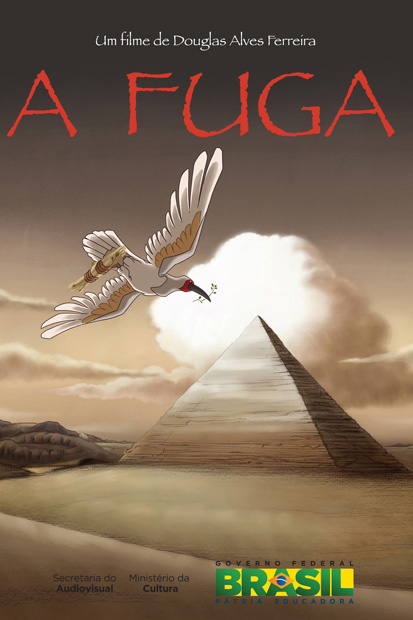Ancient Egypt has inspired scores of tales and adventures. Last month at the Luxor African Film Festival, one of the screened films was The Scape, a ten-minute short by Brazilian animator Douglas Alves Ferreira, about a young child who escapes his Roman captors to hide inside the Great Pyramid only to discover a link between time and space of different civilizations. Egypt Today caught up with Ferreira to get his thoughts on the short, ancient Egyptian civilization and the inspirations behind his animation work.
by Sherif Awad
Tell us about how you came up with The Scape.
I wrote this story back in 1996. The image of a pyramid as a spiritual gateway for reincarnation came to me because back then I was reading books on reincarnation and Buddhism. This pyramid should be a refuge for lost spirits who tragically died as victims of the desert, the Roman invasion or any other violence; a place where they could find some peace while waiting to come back to the world of the living. I mean, the Pharaohs had the real pyramids built for them. But what about the regular people? The spiritual version of those pyramids should appear wherever they were needed to attract the wandering souls for their next life. Thinking about all of this got me started on this script. This story waited on my shelf for 18 years before it went into production in 2014, when I got the funds from the Ministry of Culture in Brazil.
[caption id="attachment_501560" align="alignnone" width="413"] A promotional poster for the film.[/caption]
A promotional poster for the film.[/caption]
What does ancient Egyptian civilization represent for you?
Ancient Egyptian civilization is fascinating for everybody I think. We all saw Hollywood films about it, and the pyramids, for example, are always a subject of studies and documentaries. That time represents a period of great accomplishment and evolution, the architecture was great and way beyond that time. I also have read a book on hermetic philosophy, another example of how rich that period was. What is the significance of the story of this child who is resurrected at the end as an Indian?
This boy was horrified by the war, captivity and from the fact that he could be a slave for the Roman Empire, and so he escapes into the desert. However, this would not be enough for him because the only way for him to make a real escape from that reality is that he dies and rises in a more peaceful part of the planet. For that period, I chose India to represent a spiritual place that the Roman Empire did not reach, hence giving hope for the boy’s next life. The story is also a metaphor for everybody trying to escape the war zones and violence right now on the planet. It is a fact that is still occurring until now.
When you accepted the invitation to attend the Luxor African Film Festival, what did you look forward to when presenting this film in Egypt?
To see Egypt was my childhood dream come true for me. It is a great honor to present my film at the Luxor African Film Festival. I hope I can get to know many people, and see the productions of African filmmakers.
How would you assess the animation industry in Brazil?
We can say that we are reaching adulthood when it comes to our animation industry. During the last few years, and thanks to investment from the government, our country had two feature films winning at the prestigious Annecy film Festival. In 2014, Rio 2096, a History of Love and Hate, and in 2015, A Boy and the World were also nominated at the Oscars in the category of Best Animated Feature Film. It was the very first time an animated film from Latin America was nominated for the Oscars.
You say you were influenced by characters like Astérix or Snow White. What do you like about animation in Europe and the US? Could we see a feature animation from Latin America like we see from Disney or DreamWorks?
I always liked Astérix, who was another childhood passion. In 2005, I worked as an animator on the feature animation Astérix and the Vikings, that had about 15 minutes produced here in a Brazilian studio. The Disney influence came because I worked on Aladdin and Goof Troop, a TV series that ran from 1992 to 1995. Some episodes were entirely produced in São Paulo. For many years we had studios doing animation services for overseas like the examples you mentioned.
Animation in Europe is incredibly rich. There are a lot of artistic films and some mainstream productions, like the Astérix films for example. In the US, they normally make animated films with super budgets that are around $200 million with Disney, Pixar, Blue Sky and DreamWorks. It will take a long time before we get the kind of power that Disney and DreamWorks have. But if our government keeps funding our films, and creating laws on marketing protection, we will get there.
Comments
Leave a Comment